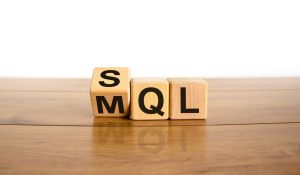
The B2B SaaS sales process typically spans around six months on average, with nearly half of all cycles lasting seven months or more. In this context, there is no room to waste time on leads that are unlikely to convert. Lead qualification is crucial for concentrating sales efforts on the most promising prospects each day. The BANT framework is a proven sales qualification method that consistently delivers results for many B2B sales representatives.
We will delve into what BANT entails and how you can leverage it to secure qualified leads and cater your B2B lead generation services. Furthermore, we will explore the uniqueness and crucial metrics of the BANT methodology.
What is BANT Framework? A Comprehensive Sales Strategy
BANT is an acronym representing “Budget, Authority, Need, Timing,” offering a straightforward method for assessing prospects in B2B sales. This framework assists organizations in gauging the extent to which a sales prospect aligns with these four criteria.
BANT is applied by collaborative B2B sales and marketing teams to evaluate a prospect’s BANT attributes. Employing BANT for B2B lead generation process enhances the efficiency of both sales and marketing teams.
To effectively apply the BANT qualification framework, it is essential to follow a systematic approach that involves qualifying prospects based on their funds for orders, authoritative personnel, dire demand, and execution timeline.
Importance of BANT in B2B Lead Generation
BANT plays a critical role in B2B lead generation by providing a structured framework to qualify leads effectively. It helps assess the prospect’s readiness to make a purchase. Evaluating the prospect’s budget determines their financial capacity, while identifying the authority figure streamlines decision-making processes.
Assessing the prospect’s genuine need and understanding their timeline for purchase allows sales teams to prioritize and allocate resources efficiently. Implementing BANT sales qualification framework ensures that sales efforts are focused on prospects who are more likely to convert into customers, improving overall conversion rates and ROI on lead generation activities in B2B environments.
What Makes BANT Sales Qualification Framework Unique
The BANT methodology stands out for its simplicity and effectiveness in evaluating a prospect’s buying potential. It offers a straightforward approach where sales representatives can promptly assess the suitability of pursuing a prospect by asking targeted questions related to real-time business concerns. This method enables sales teams to efficiently gauge whether a prospect has the financial means, decision-making power, genuine interest, and urgency to move forward in the buying process.
Moreover, what makes the BANT sales framework truly exceptional is its versatility across various stages of the sales cycle. It can be applied not only to qualify initial sales leads but also to prioritize opportunities and guide the deal closure. By incorporating BANT throughout the sales process, teams can enhance their ability to identify and focus efforts on prospects with a higher likelihood of conversion, ultimately increasing the overall victory rate. Therefore, BANT serves as an invaluable tool for any sales team seeking to optimize their approach and achieve greater success in securing deals.
How to Track BANT Metrics? Critical Segments to Assess
To enhance proficiency in utilizing the BANT methodology, it is advisable to monitor your BANT metrics closely. These metrics serve as indicators of how effectively you are implementing the framework and its impact on sales performance. By tracking specific metrics, such as the number of leads qualified or disqualified based on BANT criteria, the percentage of marketing qualified leads progressing to the next stage of the sales funnel, the average deal size and cycle duration of qualified leads, and the conversion rate and revenue generated from qualified leads, you can gain valuable insights into the effectiveness of your BANT approach.
Analyzing these metrics provides a clearer understanding of which aspects of the BANT framework are yielding positive results and which areas require refinement. This data-driven approach enables continuous improvement by identifying opportunities to optimize lead qualification processes, refine targeting strategies, and enhance overall sales performance. By leveraging B2B BANT metrics to evaluate and adjust your approach, you can maximize the impact of sales efforts.
Optimizing BANT Questions for Tapping into Prospect’s Pain Points
Refining your BANT questioning technique is a crucial step towards enhancing your proficiency with the BANT methodology. These questions should be thoughtfully crafted to be open-ended and exploratory, specifically tailored to fit the prospect’s industry, role, and unique circumstances, while also aligning with your value proposition and solution offerings. It’s essential to sequence these questions in a logical and conversational manner that feels natural.
Moreover, it’s crucial to strike a balance by interspersing your BANT question examples with rapport-building statements and value-added insights. This approach fosters a more collaborative and engaging dialogue with prospects, allowing you to gather more precise and relevant information while simultaneously building trust and credibility. By refining your lead generation strategies this way, you can optimize your interactions, leading to more effective qualification and ultimately fueling chances of converting prospects into valuable customers.
How Not to Use BANT: Focusing on Optimum Fair Utility
Misusing the BANT framework involves rigidly applying its criteria without considering individual context or prospect nuances. Over-reliance on predefined BANT questions and answers can create a transactional, checklist-driven approach that neglects relationship-building and understanding unique prospect challenges.
This can lead to premature disqualification of valuable leads and a superficial understanding of needs. To avoid these pitfalls, sales professionals should balance BANT with active listening and a consultative mindset to uncover prospect motivations effectively.
Concluding Thoughts
The B2B BANT framework offers a structured approach to lead qualification in B2B sales, focusing on fiscal plan, major executives, demand, and timeline. This method helps sales teams prioritize leads effectively and allocate resources efficiently. While BANT has been a longstanding and valuable tool for many sales teams, it’s essential to consider its suitability within the context of modern sales practices and evolving customer expectations.
As sales methodologies continue to evolve, integrating BANT framework with other modern sales strategies and technologies can enhance its effectiveness and relevance in dynamic business landscape.
The BANT expertise and assistance for lead generation from Binary Demand help you pace up your lead qualification process and achieve concrete results considerably quicker.











